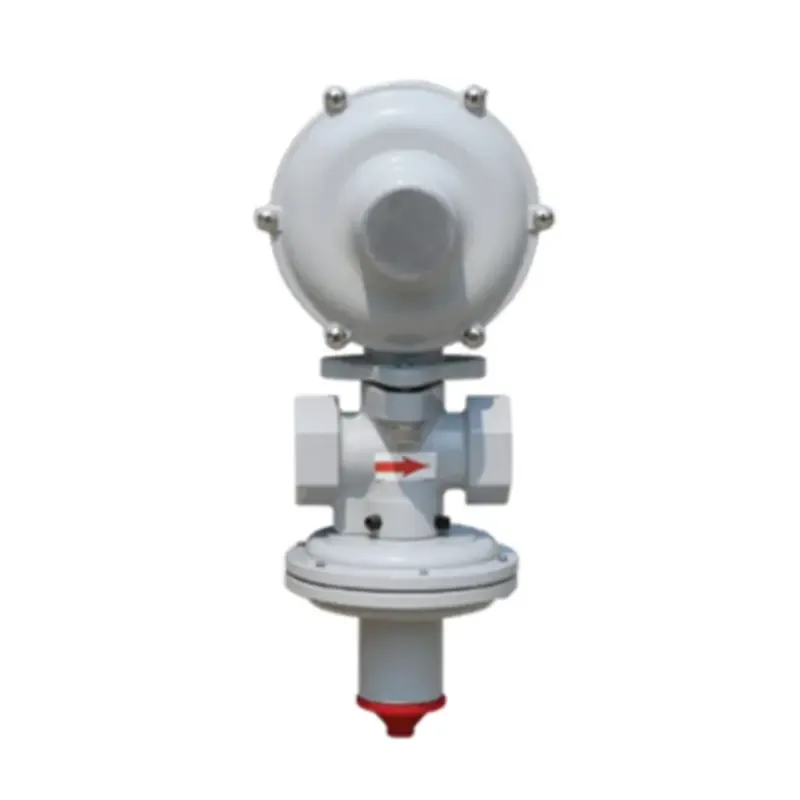
Dec . 17, 2024 13:29
Back to list
gas pressure regulator valve
Understanding Gas Pressure Regulator Valves
Gas pressure regulator valves are essential components used in various industries, including natural gas distribution, propane systems, and industrial applications. These devices regulate the pressure of gases within a system, ensuring that pressure levels remain safe and consistent to avoid hazards and uphold efficiency in operations. In this article, we will explore the workings, types, applications, and importance of gas pressure regulator valves.
What is a Gas Pressure Regulator Valve?
A gas pressure regulator valve is designed to control the outlet pressure of gas from a supply source, making it suitable for usage in specific applications that require consistent and safe pressure levels. The primary function of this device is to reduce the high pressure from the gas supply line to a lower, usable pressure, protecting downstream equipment from damage and ensuring optimal performance.
How Does It Work?
The gas pressure regulator operates based on the principle of pressure differential. It consists of a diaphragm mechanism that responds to the pressure on the outlet side. When the outlet pressure exceeds the preset setting, the diaphragm moves, causing the valve to close and reduce the flow of gas. Conversely, if the outlet pressure drops below a certain point, the diaphragm moves in the opposite direction, opening the valve to allow more gas to flow.
Most regulators also include a spring-loaded mechanism that helps set and maintain a specific outlet pressure. Some models come equipped with an adjustment knob or screw that allows users to set the desired pressure level. Additionally, many regulators are designed with safety features, such as pressure relief valves, to prevent excessive pressure buildup that could lead to catastrophic failures.
Types of Gas Pressure Regulators
Gas pressure regulators can be classified into several types based on their design and functionality
1. Single-Stage Regulators These are the simplest type, utilizing a single pressure reduction stage. They are generally used in low-pressure applications where the supply pressure does not vary significantly.
2. Two-Stage Regulators These regulators provide better pressure stability by reducing the pressure in two stages. The first stage reduces the high supply pressure to an intermediate level, which is then further reduced to the desired outlet pressure in the second stage. These are ideal for applications with varying supply pressures.
3. Automatic Regulators Designed for more complex systems, these regulators automatically adjust to changing conditions in the gas supply to maintain the desired pressure at all times.
gas pressure regulator valve

5. Relief-Valve Regulators These incorporate an integrated pressure relief valve to prevent excessive pressure build-up, adding an extra layer of safety.
Applications of Gas Pressure Regulators
Gas pressure regulators are utilized in a multitude of applications, including
- Natural Gas Distribution Regulators ensure that the gas flowing into residential and commercial buildings is at a safe and constant pressure.
- Propane Systems Used for heating, cooking, and powering appliances, regulators manage the pressure to ensure efficient performance and safety.
- Industrial Applications Many industries rely on gas for various processes, and regulators help control the pressure in equipment such as boilers, furnaces, and combustion engines.
- Laboratories Gas regulators are crucial in laboratories where gases like hydrogen, oxygen, and nitrogen must be controlled for experiments and processes.
The Importance of Gas Pressure Regulators
The role of gas pressure regulator valves cannot be overstated. They contribute significantly to the safety and efficiency of gas distribution systems. Proper pressure regulation reduces the risk of gas leaks, explosions, and equipment failure. Additionally, maintaining stable pressure levels leads to better energy efficiency and extends the life of gas-powered appliances and machinery.
In conclusion, gas pressure regulator valves are vital components in various industries, ensuring that gases are delivered at safe and desirable pressures. By understanding their types and functions, users can make informed decisions when selecting the right regulator for their needs, contributing to safe and efficient gas usage in various applications. Whether for residential, commercial, or industrial use, the importance of these devices in maintaining safe and optimal gas pressure levels is clear.
Latest news
-
Safety Valve Spring-Loaded Design Overpressure ProtectionNewsJul.25,2025
-
Precision Voltage Regulator AC5 Accuracy Grade PerformanceNewsJul.25,2025
-
Natural Gas Pressure Regulating Skid Industrial Pipeline ApplicationsNewsJul.25,2025
-
Natural Gas Filter Stainless Steel Mesh Element DesignNewsJul.25,2025
-
Gas Pressure Regulator Valve Direct-Acting Spring-Loaded DesignNewsJul.25,2025
-
Decompression Equipment Multi-Stage Heat Exchange System DesignNewsJul.25,2025

